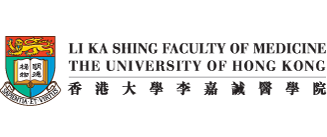Home > Tables & Figures
Tables & Figures
Tables
Table 6.3 Antimicrobial prophylaxis in clean-contaminated operations
| Type of operation | Indications | Recommended drugs1 |
|---|---|---|
| Oral-pharyngeal / nasal |
|
If Pseudomonas is suspected:
|
| Ear |
|
|
| Upper gastrointestinal tract | Gastro-duodenal (high risk):
|
|
|
|
|
| Hepato-biliary system Laparoscopic gall bladder surgery |
High risk:
|
|
| Endoscopic retrograde cholangio-pancreatography (ERCP) |
|
|
| Appendectomy |
|
|
| Colorectal |
|
Parenteral
|
| Abdominal / vaginal hysterectomy |
When vaginal wound is present:
|
|
| Caesarean section (502) | All caesarean sections are indicated for antibiotic prophylaxis (503) |
When vaginal wound is present:
|
| Abortion | Antimicrobial prophylaxis should be based on individual clinical condition and local epidemiology (504–505) |
|
| Urology7 |
|
|
| Hernia repair8 |
|
Antimicrobial prophylaxis is not indicated |
|
|
|
| Breast cancer surgery8 (506) |
|
Footnotes:
- 1The dose of antimicrobial agents recommended in the guidelines is based on adult patient with normal renal function. Special attention should be paid to patient with renal impairment, on renal replacement therapy, or if there is potential drug-drug interaction. Consultation to clinical microbiologist, infectious disease physician and clinical pharmacist is required in complicated cases.
- 2For hospitals or units with a high incidence of postoperative wound infections by MRSA or methicillin-resistant Staphylococcus epidermidis, screening for MRSA may be indicated to identify patients for additional preoperative measures such as chlorhexidine bath, 2% mupirocin nasal ointment [Bactroban Nasal] and/or the use of vancomycin as preoperative prophylaxis. Evidence is strongest for cardiothoracic and orthopaedic surgery with implantation (507–508).
- 3Give cefazolin 2 g for patients with body weight greater than 80 kg. For patients allergic to cefazolin, vancomycin 1 g infused over 1 hour should be given after premedication with an antihistamine. Rapid I.V. administration of vancomycin may cause hypotension, which could be especially dangerous during induction of anaesthesia.
- 4Amoxicillin-clavulanate and ampicillin-sulbactam are similar in spectrum coverage and centres may choose to use ampicillin-sulbactam.
- 5Choice of agent(s) depends on the type of open fractures by the Gustilo classification and the likely organisms contaminating the wound. In general, prophylactic antibiotic should be directed against Gram-positive organisms for Gustilo type I and II open fractures; additional Gram-negative coverage should be added for Gustilo type III open fractures. In the setting of faecal or potential clostrial contamination (e.g. soil exposure), a penicillin should be included in the regimen.
- 6The optimal antibiotic and dosing regimens for abortion are unclear. The antimicrobial prophylaxis for abortion stated in Royal College of Obstetricians and Gynaecologists (United Kingdom) (422) clinical guidelines is Level C recommendations and may be suitable. They include: metronidazole 1 g rectally at the time of abortion plus doxycycline 100 mg orally b.d. for 7 days, commencing on the day of abortion; OR metronidazole 1 g rectally at the time of abortion plus azithromycin 1 g orally on the day of abortion.
- 7For transrectal ultrasound (TRUS)-guided biopsy of the prostate, prophylactic regimen is evolving because of increasing fluoroquinolone resistance in E. coli. (509). If a fluoroquinolone is used, administer the drug 1–2 hours before the procedure to allow maximum tissue penetration (510). Ensure adequate drug level in the body by giving a full standard dose (500 mg to 750 mg for levofloxacin and ciprofloxacin). If post-biopsy infection develops, antibiotic treatment regimen should include coverage against ESBL-producing organisms given the high prevalence of this resistance mechanism in Hong Kong (Table 1.3).
- 8Amoxicillin-clavulanate may be used if the operation is such that anaerobic coverage is needed, such as in diabetic foot, hernia repair with bowel strangulation or incarcerated/ strangulated hernia or mastectomy with implant or foreign body.
- 9Antimicrobial agents should be considered postoperatively for operations with suppurative, ruptured and gangrenous conditions.















